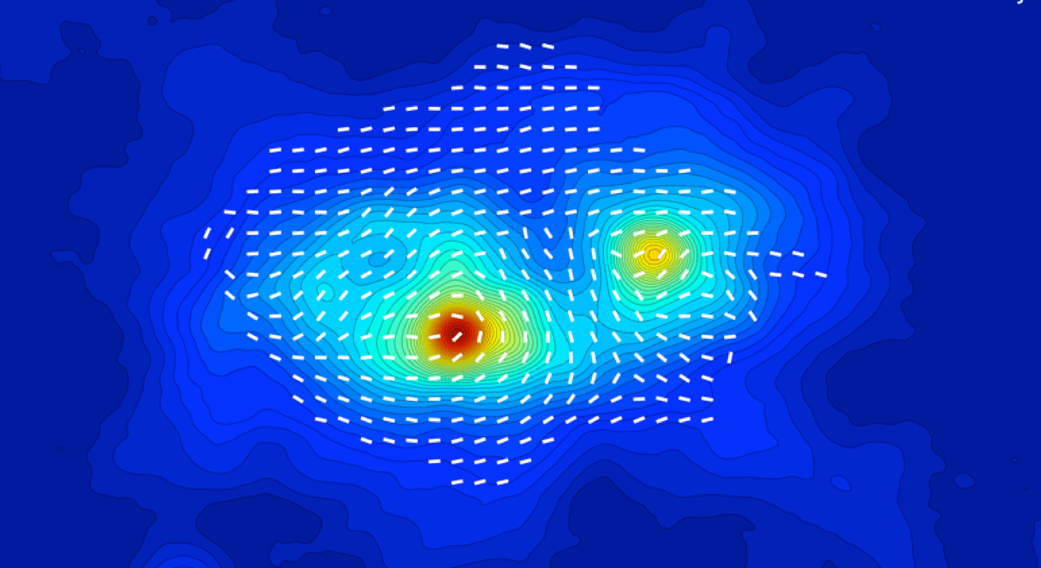This is the first polarization image from the Stratospheric Observatory for Infrared Astronomy’s new infrared camera and polarimeter, known as the High-resolution Airborne Wideband Camera-plus (HAWC+). Polarimeters measure the alignment of incoming light waves, enabling HAWC+ to map magnetic fields in star forming regions.
This image shows how dust grains are aligned in the W3 star-forming region, a giant molecular cloud in the constellation Cassiopeia approximately 6,200 light years from Earth. Researchers are now comparing data from these observations with models that predict how stars form.
HAWC+ is the only currently operating astronomical camera that makes images using far-infrared light (from 40 to 300 microns), allowing studies of the low-temperature, early states of star and planet formation. More observations with this instrument are currently underway. (NASA/SOFIA/Caltech/Darren Dowell)
For more information on HAWC+, visit:
For more information on SOFIA, visit:



























